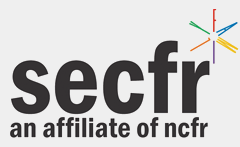Title
Teaching a Person to Fish: How Delivering Relationship Education Benefits Those Who Are Delivering the Programming.
Proposal Focus
Research
Presentation Type
Presentation
Abstract
Increasing relationship quality and satisfaction among couples through delivering relationship education has been a topic of interest for decades, with the 1980s marking the initiation of a dramatic expansion of research in this area. The 1980s also saw the beginning of what was to become a continuing decline in marital quality and satisfaction among first-time married couples (Amato, Johnson, Booth, & Rogers, 2003; Schramm & Harris, 2010). This interest in dyadic couple relationship quality was likely driven by the expanding awareness that quality of marital relationships influences a broad range of positive and negative outcomes; healthy, satisfying marriages provide numerous benefits important to individuals and society, while marital dissolution has a profoundly negative effect (Amato, 2010; Cowan & Cowan, 2005; Harris, Schramm, Marshall, & Lee, 2012; Schramm & Harris, 2010). Furthermore, subjective levels of marital quality and satisfaction are predictive of both marital stability and marital dissolution (Gottman, 1994; Gottman & Notarius, 2000). Couple and relationship education (CRE) interventions have shown mixed results across experimental studies. Moderate effect size improvements have been found across CRE intervention studies in the specific areas of relationship quality and communication skills (Hawkins, Blanchard, Baldwin, & Fawcett, 2008).
But how does the delivery of relationship programming impact the relationship quality, communication skills, and well-being of those who actually deliver the programming interventions? The purpose of this study was to assess associations between relationship quality and satisfaction, intimate partner consensus, and relevant contextual factors among those who deliver relationship education programming in Florida through the SMART Couples Project, a federally funded healthy marriages and relationships grant. Initial mixed methods results indicate that “teaching a person to fish” through delivering relationship education programming generally has a positive impact on relationship quality, communication skills, and well-being among those who deliver the programming. Specific implications for impact of relationship education delivery on those who deliver the intervention are proposed.
Keywords
relationship education, benefits of teaching relationship education
Location
Tiger I
Start Date
10-3-2018 10:00 AM
End Date
10-3-2018 11:30 AM
Teaching a Person to Fish: How Delivering Relationship Education Benefits Those Who Are Delivering the Programming.
Tiger I
Increasing relationship quality and satisfaction among couples through delivering relationship education has been a topic of interest for decades, with the 1980s marking the initiation of a dramatic expansion of research in this area. The 1980s also saw the beginning of what was to become a continuing decline in marital quality and satisfaction among first-time married couples (Amato, Johnson, Booth, & Rogers, 2003; Schramm & Harris, 2010). This interest in dyadic couple relationship quality was likely driven by the expanding awareness that quality of marital relationships influences a broad range of positive and negative outcomes; healthy, satisfying marriages provide numerous benefits important to individuals and society, while marital dissolution has a profoundly negative effect (Amato, 2010; Cowan & Cowan, 2005; Harris, Schramm, Marshall, & Lee, 2012; Schramm & Harris, 2010). Furthermore, subjective levels of marital quality and satisfaction are predictive of both marital stability and marital dissolution (Gottman, 1994; Gottman & Notarius, 2000). Couple and relationship education (CRE) interventions have shown mixed results across experimental studies. Moderate effect size improvements have been found across CRE intervention studies in the specific areas of relationship quality and communication skills (Hawkins, Blanchard, Baldwin, & Fawcett, 2008).
But how does the delivery of relationship programming impact the relationship quality, communication skills, and well-being of those who actually deliver the programming interventions? The purpose of this study was to assess associations between relationship quality and satisfaction, intimate partner consensus, and relevant contextual factors among those who deliver relationship education programming in Florida through the SMART Couples Project, a federally funded healthy marriages and relationships grant. Initial mixed methods results indicate that “teaching a person to fish” through delivering relationship education programming generally has a positive impact on relationship quality, communication skills, and well-being among those who deliver the programming. Specific implications for impact of relationship education delivery on those who deliver the intervention are proposed.

